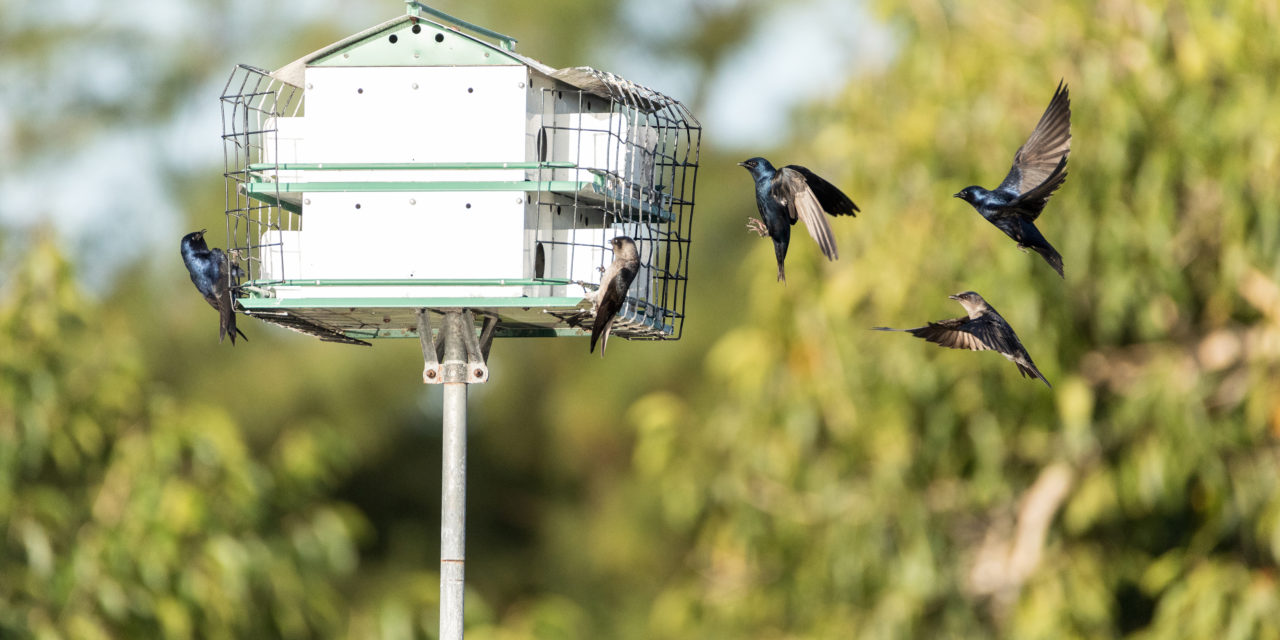Purple Martins (Progne subis) are the largest member of the North American swallow family and weigh less than 2 ounces. Martins primarily eat flies, beetles, bees, and other flying insects. Starting in August, Purple Martins migrate to South America for the winter. Older Purple Martin males will return to breeding sites in the Midwest during March and subadults will arrive in April and May. It is essential to have your house up and ready for martins by the 15th of March. Buchheit stores have a variety of Purple Martin houses, decoys, poles, and predator guards. Here are some tips from the Missouri Department of Conservation on how to prepare for the arrival of Purple Martins.
Attracting martins to new housing can be easy in areas with many nearby colonies, but often requires multiple years of trying in locations with a lower martin density. Getting a colony to flourish in a new place requires a significant amount of time. Martins will nest in gourds or aluminum houses, but the exterior of these homes should be white to keep cool during the hot summers of the Midwest. They are attracted to houses that are 12 to 20 feet above the ground. However, the higher the housing is placed, the more susceptible it is to storm damage. Martins show a strong preference for a wide-open area around their housing, with a minimum of two to three open flyways. The house also should be at least 40 feet from trees, further if possible. Placing housing in entirely open areas allows adults to spot aerial danger in time to escape. An external barrier guard can be attached to a martin house to offer some protection from owls. Martins seek accommodation within sight of human activity because they feel more secure from predators. Regular monitoring is a crucial part of successful martin management. This allows you to keep track of how many young are in each nest and if predators visited the nest. After each nest check, make sure that the house compartments are returned in the same direction. If houses do not face the same direction, martins become disoriented and abandon their nests. A pole guard should be added to deter raccoons, snakes, and cats. These will help keep predators from raiding the martins’ nests. To ensure that martins have a successful season, put up your houses by March 15th, and do routine housing checks.
Happy birding!






